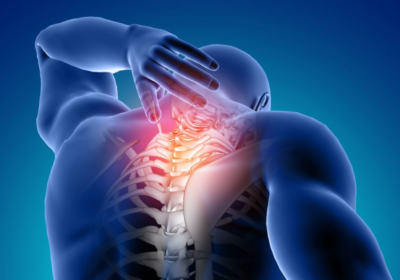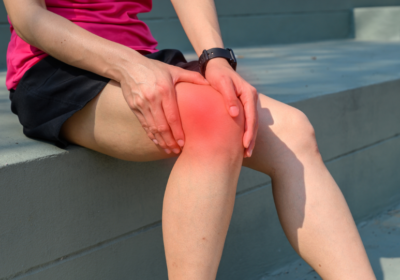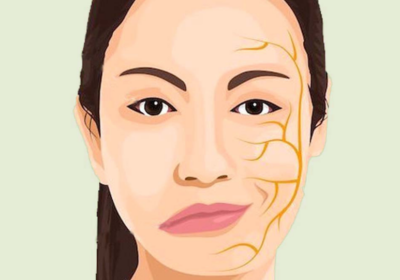PIRIFORMIS SYNDROME; EASING PAIN WITH AYURVEDA!
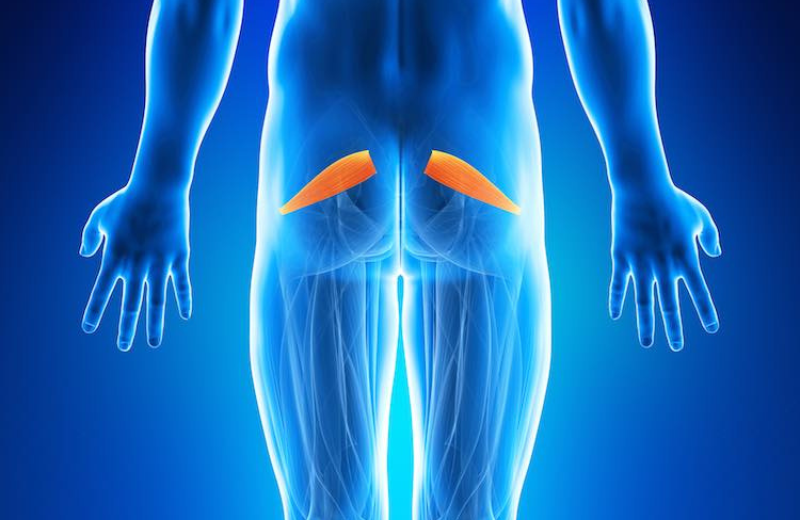
Piriformis syndrome is a neuromuscular condition that occurs when the piriformis muscle-a small muscle located deep in the buttock-compresses or irritates the sciatic nerve, causing pain, tingling, or numbness along the path of the nerve(which typically runs from the buttock down the back of the leg).
Anatomy:
- Piriformis muscle: Originates from the sacrum(the base of the spine) and inserts on the greater trochanter of the femur(thigh bone).
- Sciatic Nerve: The largest nerve in the body, it usually passes under the piriformis muscle, but in some people, it passes through or over the muscle, increasing the risk of compression.
CAUSES OF PIRIFORMIS SYNDROME:
1. Muscle Related causes:
These are the most common and relate to issues within the piriformis muscle itself.
a)Muscle spasm or tightness:
- The primary cause of nerve compression.
- It can be due to overuse, poor posture, prolonged sitting, or cold exposure.
- A tight piriformis increases pressure on the sciatic nerve beneath or through it.
b.Muscle Imbalance:
- Weak gluteal muscles or core leads to compensatory overuse of the piriformis.
- This overload can cause tightening, inflammation, or hypertrophy(thickening) of the piriformis.
c.Trauma or Injury:
- A direct fall or blow to the buttock(eg: from a road accident or sports injury)can: Cause muscle swelling, hematoma, or scar formation.
- This results in persistent irritation of the sciatic nerve.
2. Postural and Mechanical causes:
a)Prolonged sitting:
- Common in drivers, desk workers, or people with sedentary lifestyles.
- Leads to chronic compression of the piriformis and sciatic nerve.
b)Poor posture or Gait:
- Pelvic misalignment or abnormal walking/running mechanics puts stress on the piriformis.
- Flat feet or limb length discrepancy also contribute.
c)Improper exercise techniques:
- Overtraining, especially without stretching, can strain the piriformis.
- Examples: Excessive stair climbing, squats, lunges, or long-distance running.
3. Neuromuscular and structural causes:
a)Anatomical variations:
- In about 15-20 % of people, the sciatic nerve passes through or splits around the piriformis, increasing the likelihood of nerve entrapment.
- This congenital variation can cause symptoms even with normal muscle tone.
b)Lumbar spine disorders:
- Conditions like lumbar disc herniation or spinal stenosis may alter posture or gait, indirectly stressing piriformis.
4. Inflammatory or Scar tissue causes:
a)Myofascial pain syndrome:
- Trigger points in piriformis can irritate surrounding structures, including the sciatic nerve.
b)Post-surgical or fibrotic changes:
- Previous pelvic or hip surgeries can lead to adhesions, fibrosis, or abnormal scar tissue around the piriformis or sciatic nerve.
5. Functional or Habitual causes:
a)Carrying a wallet in the back pocket(wallet neuritis):
- Sitting on a thick wallet compresses the piriformis and underlying nerve.
b)Habitual cross leg sitting:
- Prolonged crossing of the legs can stress the piriformis, especially on one side.
CLINICAL SYMPTOMS OF PIRIFORMIS SYNDROME:
1. Buttock pain:
- Primary symptom and typically the first complaint.
- Deep, aching, or burning pain in the buttock.
- Usually unilateral(on one side).
- Worsens with prolonged sitting, climbing stairs, or activities that involve hip movement.
2. Radiating sciatic pain:
- Pain may radiate from the buttock down the posterior thigh, sometimes extending to the calf or foot, mimicking sciatica.
- Unlike disc herniation, low back pain is absent or usually minimal.
- Pain follows the path of the sciatic nerve compressed by piriformis.
3. Numbness and tingling:
- Paresthesia in the posterior thigh, leg, or foot due to sciatic nerve irritation.
- It is more pronounced when sitting for a long duration.
4. Tenderness over the piriformis muscle:
- On deep palpation, there is marked tenderness over the greater sciatic notch or lateral to the sacrum.
- The area might feel tight or in spasm.
5. Aggravation by hip movement:
Symptoms can worsen with:
- Hip flexion, adduction, and internal rotation(FAIR position).
- Activities like crossing the legs, squatting, or running.
6. Difficulty sitting or sitting imbalance:
- Patients often prefer to sit on the unaffected buttocks.
- May frequently shift position or avoid sitting altogether.
7. Reduced range of motion:
- Hip joint movements, especially internal rotation and abduction, may be limited due to pain or muscle tightness.
8. Muscle spasm or tightness:
- Palpable spasm in the piriformis muscle.
- Sometimes a “knot” or tight band can be felt in the muscle.
10.Gait Disturbances(in chronic cases):
- In long-standing cases, patients may develop a slight limp or altered gait due to persistent discomfort and compensatory movements.
DIAGNOSIS OF PIRIFORMIS SYNDROME:
1.Clinical History(Subjective Assessment):
A detailed patient history is the first step. Key points include:
- Buttock pain, often deep and aching.
- Pain radiating down the back of the thigh(sciatic type pain).
Pain worsens with:
- Sitting for long periods.
- Rising from sitting.
- Climbing stairs or inclines.
- The pain improves with walking or lying down.
- No associated low back pain(helps distinguish it from lumbar disc issues).
2. Physical Examination:
Several provocative tests are used to diagnose piriformis syndrome:
A)Palpation:
- Tenderness over greater sciatic notch or piriformis muscle belly(mid buttock area).
B)FAIR Test(Flexion,Adduction,and Internal Rotation):
The patient lies on the unaffected side.
- The affected hip is flexed to 60-90 degrees, adducted, and internally rotated.
- Reproduction of sciatic symptoms(pain, tingling)suggests piriformis syndrome.
C)Pace Test:
- The patient sits and abducts thighs against resistance.
- Pain or weakness in the test may indicate piriformis involvement.
D)Freiberg’s Test:
- Pain with forced internal rotation of the extended thigh.
- It stretches the piriformis and can compress the sciatic nerve.
E)Beatty’s Maneuver:
- The patient lies on the unaffected side and lifts the top knee while keeping the foot on the floor.
- Pain in the buttock is considered a positive test.
3. Imaging and investigations:
There is no definitive test, but imaging is used to rule out other conditions:
- MRI of lumbar spine: To rule out disc pathology.
- Pelvic MRI or MR neurography: Can show piriformis muscle hypertrophy or inflammation and sciatic nerve irritation.
- Ultrasound or MRI of the hip/gluteal region: May reveal piriformis asymmetry or sciatic nerve impingement.
- Electromyography(EMG): May show sciatic nerve irritation, but findings are often nonspecific.
DIFFERENTIAL DIAGNOSIS:
Here are the most important conditions to differentiate from piriformis syndrome:
1.Lumbar Radiculopathy(Sciatica):
Cause:
- Nerve root compression in the lumbar spine(Eg: a herniated disc, spinal stenosis).
Key features:
- Low back pain radiating down the leg(often below the knee).
- Neurological signs: Muscle weakness, diminished reflexes, dermatomal sensory loss.
- Positive straight leg test.
Differentiation:
- Piriformis syndrome rarely involves back pain or true neurological deficits.
- Imaging (MRI) often shows spinal pathology in radiculopathy.
2.Sacroiliac(SI)joint Dysfunction:
Cause:
- Inflammation or dysfunction of the SI joint.
Key Features:
- Pain localized to the lower back or buttock.
- Often unilateral.
- Aggravated by standing or climbing stairs.
Differentiation:
- SI joint tests like FABER or Gaenslen’s test, are more specific.
- No sciatic nerve involvement in most cases.
3.Hip joint Pathologies(eg:Osteoarthritis,Laral tears):
Cause:
- Degenerative or traumatic changes in the hip joint.
Key features:
- Groin pain is more than buttock pain.
- Limited range of motion in the hip.
- Pain with hip rotation or weight bearing.
Differentiation:
- Pain is more anterior and mechanical.
- X-ray or MRI of the hip can help confirm.
4. Ischiofemoral impingement:
Cause:
- Narrowing between the ischium and femur leads to quadratus femoris impingement.
Key Features:
- Deep gluteal pain.
- Pain worsens with long-stride walking.
Differentiation:
- MRI shows narrowed Ischiofemoral space and muscle edema.
- Pain location is more lateral /deep than typical piriformis pain.
5. Hamstring Syndrome:
Cause:
- Irritation of the sciatic nerve at ischial tuberosity by proximal hamstring tendons.
Key features:
- Pain with sitting or stretching hamstrings.
- Deep buttock pain.
Differentiation:
- Palpation over ischial tuberosity elicits pain.
- Hamstring stretch reproduces symptoms more than hip rotation.
6. Gluteal Tendinopathy/Greater Trochanteric pain syndrome:
Cause:
- Tendon irritation or bursal inflammation near the greater trochanter.
Key Features:
- Lateral hip pain, tender over trochanter.
- Pain is worse when lying on the affected side.
Differentiation:
- Local tenderness clearly over the greater trochanter.
- No sciatic type pain.
7. Myofascial Pain syndrome:
Cause:
- Trigger points in gluteal or pelvic muscles.
Key features:
- Localized muscle tenderness.
- Pain may radiate but not in a dermatomal pattern.
Differentiation:
- Trigger point palpation reproduces symptoms.
- No neurological signs or sciatic nerve involvement.
8.Tumors or Mass lesions(eg:Pelvic tumors or sarcomas):
Cause:
- Space-occupying lesions compressing nerves.
Key Features:
- Persistent, nonmechanical pain.
- Night pain, weight loss.
Differentiation:
- Imaging(MRI, CT) is essential to rule out.
- Symptoms persist despite typical treatment.
TREATMENT OF PIRIFORMIS SYNDROME IN AYURVEDA:
Maurya Ayurveda Hospital offers a comprehensive and integrated approach to treating piriformis syndrome by combining Ayurveda, Acupuncture, and physiotherapy. Our treatment protocol is designed to address the root cause of the condition, relieve pain, and restore mobility.
ROLE OF AYURVEDA IN PIRIFORMIS SYNDROME:
INTERNAL MEDICATIONS:
- Gandharva Hasthadi Kashayam tab.
- Shaddharanam Tab.
- Punarnavadi Tab.
- Vaiswanara Choornam.
- Yogaraja Guggulu.
- Sahacharadi Tab.
- Sahacharadi (21) Avarthi Tab.
- Dhanwantharam Kashayam .
- Bonton Tab.
- Gandha Thailam Capsule.
EXTERNAL TREATMENT GIVEN ARE:
1. PODI KIZHI:

Podi means powder and Kizhi means bundle or pouch. Herbal powders made from plants like(Rasnadi, Eranda moola, Vacha, and Devadaru-here we normally use Kolakulathadi Choornam) are roasted and tied in cloth boluses. These boluses are heated(dry or with oil) and gently patted or massaged over the body or localized area. It is often used after applying medicated oil(abhyanga) but here we use it in dry form(for conditions with ama or inflammation).
Benefits of Podi Kizhi in piriformis syndrome:
- It reduces muscle spasms and stiffness.
- It reduces pain and inflammation.
- It improves blood circulation.
- It detoxifies and clears ama.
- It balances Vata dosha.
2.NADI SWEDAM(STEAM THERAPY):
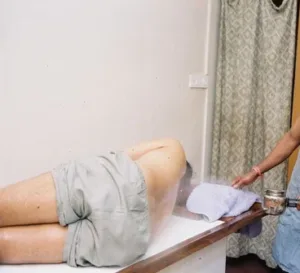
Nadi Swedam is a type of steam therapy used in ayurveda. It is typically administered through a tube(nozzle/nadi) or steam box that directs medicated steam to specific body parts or the whole body.
It is usually done in about 10-20 minutes, depending on the individual’s condition.
The types of decoctions used vary but often include herbs with:
- Vatahara(anti-vata)
- Shothahara(anti-inflammatory)
- Vedanasthaapana(analgesic)properties.
Benefits of Nadi Swedam in Piriformis Syndrome:
- It relieves muscle spasms.
- It improves circulation.
- It reduces pain and stiffness.
- It supports mobility and function.
3. DHARA:
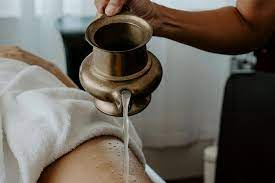
Dhara means continuous pouring of liquid over a specific part of the body. Various types of dhara are based on the liquids used. Kashya dhara and Dhanyamla dhara are normally beneficial in this condition.
a)Kashaya Dhara:
Procedure: Decoctions(kashaya) made from Vatahara and anti-inflammatory herbs are poured over the affected region.
Medicinal Herbs used:Dashamoola,rasna,eranda,nirgundi.
Benefits:
- It drains toxins(ama) and reduces inflammation.
- It clears pathway obstructions(vata avarana).
- It relieves burning and radiating pain.
b)Dhanyamla Dhara:
Procedure: Warm Dhanyamla(fermented liquid) is poured continuously over the body or affected part.
Benefits of Dhara in Piriformis Syndrome:
- Especially effective if there is ama or kapha involvement.
- It reduces heaviness, stiffness, and inflammation.
- It improves local metabolism and enhances healing.
4. LEPAM:
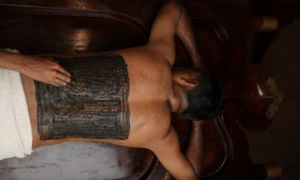
Lepam is a traditional ayurvedic treatment where herbal paste is applied to a specific part of the body to provide relief from pain, inflammation, and stiffness. Medicinal herbs with anti-inflammatory, analgesic, and vata-specifying properties are chosen.
Common medicines used are; Rasnadi, Grahadhoomadhi, etc. Medicinal paste is made warmed and applied evenly to the specific regions. It is kept till the paste gets dried. After that, it is wiped off gently with warm water.
Benefits of Lepam in Piriformis Syndrome:
- It relieves muscle spasms.
- It reduces inflammation.
- It improves blood circulation.
- It gives natural pain relief.
- It provides muscle relaxation.
5. ABHYANGA:
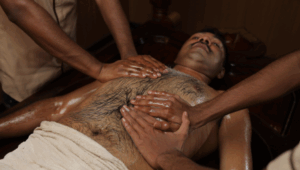
Abhyanga is an oil massage performed systematically, usually followed by Swedanam (fomentation or steam therapy). The oil used is selected on an individual’s Prakriti (constitution) and Vikriti(imbalance). Usually, Dhanwanthara Taila, Ksheerabala Taila, or Sahacharadi Taila are normally used. It is usually done about 30-45 minutes.
Benefits of Abhyanga in Piriformis syndrome:
- It reduces muscle stiffness and spasms.
- It improves blood circulation.
- It reduces Vata dosha.
- It lubricates muscles and joints.
6. VASTHI:
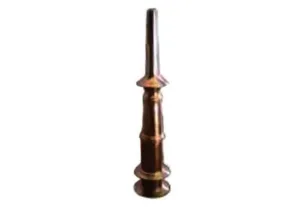
Vasthi is one of the pancha karma therapies and is considered the most effective treatment for Vata-related disorders. It involves the administration of medicated oils or decoctions through the rectal route. This mode of delivery helps directly target the colon(Pakvashaya)the main site of Vata dosha.
There are two types of Vathi:
- Sneha vasthi:Oil based enema.
- Kashay Vasthi: Decoction-based enema(includes oil, honey, salt, and herbal decoction in a specific proportion).
Benefits of Vasthi in Piriformis Syndrome:
- It reduces inflammation and nerve irritation.
- It improves blood circulation and tissue healing.
- It relieves muscle spasms and pain.
- It pacifies Vata dosha.
- Helps in detoxification.
ROLE OF PHYSIOTHERAPY IN PIRIFORMIS SYNDROME:
Physical therapy plays a central role in the effective management and long-term recovery of piriformis syndrome, a neuromuscular condition caused by compression or irritation of the sciatic nerve by the piriformis muscle in the buttock.
1. Assessment of diagnosis:
- Assessing posture, gait, and movement patterns.
- Performing clinical tests like FAIR(Flexion, Adduction, and Internal Rotation) test or piriformis stretch test.
- Differentiating piriformis syndrome from lumbar radiculopathy or herniated disc through clinical evaluation.
2. Pain Relief:
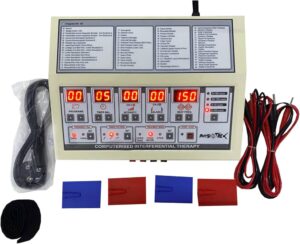
Physiotherapists offer non-invasive techniques to reduce pain and muscle tension.
- Thermotherapy: Hot packs or ultrasounds to increase blood flow and reduce spasms.
- Cryotherapy: Ice packs for acute inflammation.
- Electrotherapy: TENS(Transcutaneous Electrical Nerve Stimulation) or IFT(Interferential Therapy).
- Soft tissue mobilization: Gentle massage or myofascial release to relax the piriformis muscle.
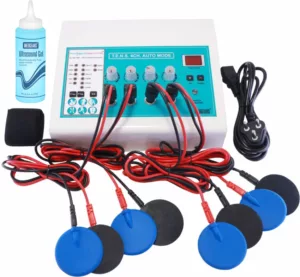
3. Stretching Exercises:
- Specific stretching of the piriformis and surrounding muscles(gluteus maximus, hamstrings, hip rotators).
- Piriformis stretch: Supine or seated versions that externally rotate the hip.
- Hip flexor stretches(iliopsoas, rectus femoris)to correct pelvic alignment.
These help reduce compression on the sciatic nerve.
4. Strengthening exercises:
The focus is on core stability and pelvic alignment.
- Gluteal strengthening: Bridges, clamshells, and squats to improve gluteus medius and minimus strength.
- Core activation: Strengthening the abdominal muscles to reduce strain on the pelvis.
- Functional strengthening: Incorporates balance and proprioception training for long-term recovery.
5. Manual Therapy Techniques:
- Trigger point release in piriformis and surrounding muscles.
- Joint mobilization of sacroiliac joint and lumbar spine to restore mobility.
- Muscle energy techniques(METs): to reduce muscle tightness and biomechanical dysfunction.
6.Neuromuscular Reeducation:
Helps restore proper movement patterns:
- Gait training.
- Postural correction.
- Pelvic alignment retraining.
This prevents recurrent strain on the piriformis.
7. Education and ergonomics:
Physiotherapists educate patients on:
- Postural habits(avoiding prolonged sitting with legs crossed or uneven weight bearing).
- Home exercise programs to maintain flexibility and strength.
- Workplace ergonomics to prevent recurrence.
8. Prevention of Recurrence:
- Long-term follow-up includes progression of exercise, load management, and lifestyle modifications.
- Advice on activity modification for athletes or sedentary individuals to avoid triggers.
ROLE OF ACUPUNCTURE IN PIRIFORMIS SYNDROME:
A. Local Needling:
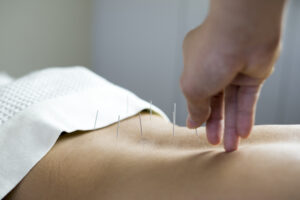
a)GB30(Huantiao):
- Location: Buttock,⅓ between greater trochanter and sacral hiatus.
- Relieves hip and sciatic pain.
b)BL54(Zhibian):
- Location: Buttock,3 cm lateral to the midline at sacral region.
- Relieves local pain and sciatic pain.
c)BL36(Chengfu):
- Thigh, below the gluteal fold.
- It relieves lower back and buttock pain.
d)BL40(Weizhong):
- Location: Knee crease(popliteal fossa).
- It benefits in pain at the lumbar and lower limb region.
e)GB34(Yanglingquan):
- Location: Lateral leg, near fibula head.
- It relaxes tendons and muscles.
f)L14 and LV3(Four gates):
- Location: Hands and feet.
- It relieves pain systematically.
B. Electroacupuncture:
- Electrodes are connected to needles placed in the piriformis region.
- Mild electrical pulses are passed through to enhance stimulation.
- Increases effectiveness in chronic cases with deep muscle tightness or nerve entrapment.
Benefits of Acupuncture:
- Relieves muscle tension: Inserting needles into piriformis muscles and surrounding areas can relax muscle fibers and reduce spasms.
- Improves blood flow: It enhances circulation to the affected area, promoting healing and reducing inflammation.
- Modulates nerve signals: Acupuncture calms nerve irritability and reduces sciatic pain by altering the pain signals that are processed in the central nervous system.
- Release endorphins: These are natural painkillers released by the body, triggered by acupuncture stimulation.
- Reduces inflammation: It helps suppress inflammatory responses around the piriformis and sciatic nerve.
DIET REGULATIONS SUGGESTED IN OUR HOSPITAL:
Food recommended to avoid are:
- Milk, milk products(curd, butter, paneer, milk, tea/coffee, ice cream, shakes, cheese etc).
- Cold food,(juices, shakes, pastries) and pickles.
- Fruits, dry fruits, and nuts(Big bananas can be steamed and taken).
- Fast food, fried, bakery, and oily foods.
- Fermented foods like dosa, idli, and fermented appam.
- Tuber items like potato, tapioca, and sweet potato.
- Nonvegetarian items like Fish, egg, and meat(if necessary, mutton can be taken in curry form).
A few recommended food items to be taken are:
- Hot kanji.
- Egg white.
- Steamed food items like idiyappam, put, and chapati with vegetable curry.
- Take boiled vegetables rather than raw salads.
General Suggestion:
- Avoid strenuous activities.
- Drink enough water(2.5L-3L).
DISCLAIMER: The information provided in this article is intended solely for educational purposes. Treatment decisions should be made exclusively by a well-qualified Ayurvedic physician. Self-medication is strongly discouraged.
Maurya Ayurveda Hospital,opposite to Sabine Hospital,Pezhakkapilly P.O,Muvattupuzha,Ernakulam;PIN:686673,Contact no:9947183000
Email: info@mauryaayurveda.com
Maurya Ayurveda Ortho & Neuro Rehabilitation Centre ( Ayurveda Hospital )


